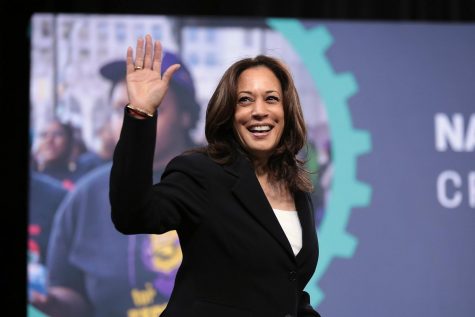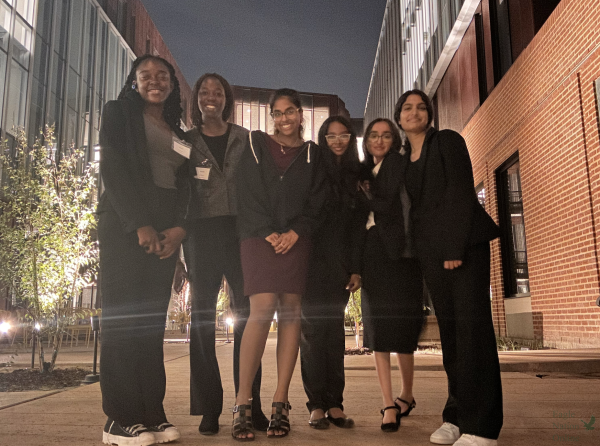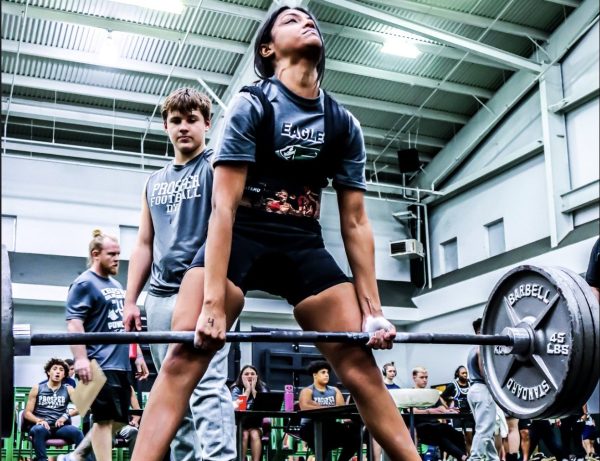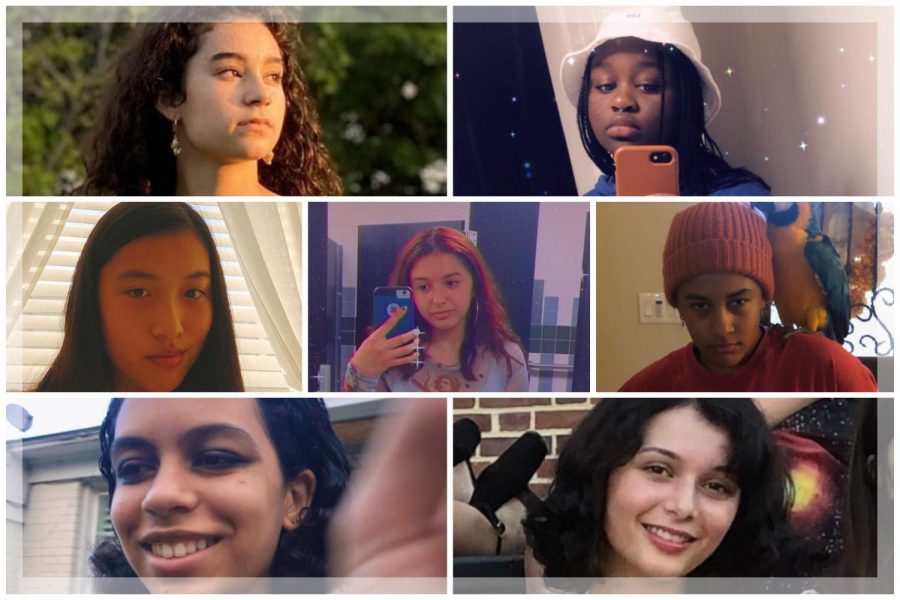Column: Kamala Harris overcomes hurdles for women of color
In the collage above, female students of color are pictured, friends of columnist Kalyani, with her in the bottom right. “I made this collage to show who is being immediately impacted by Kamala Harris’s election,” Kalyani said. “She represents the very real progress being made for women of color in the United States.”
Since Kamala Harris entered the spotlight, she has been a beacon of hope for women of color. Now, Harris has become the first woman, first Black person, and first South Asian person to become vice president. Throughout her campaign, she has represented the women’s rights movement’s accomplishments in this century.
At her first appearance since the election, Harris wore a white suit and blouse. White is widely considered a symbol of the suffragette movement of the early 20th century, when activist organizations fought for women to have the right to vote. This year marks the 100th anniversary of that movement. In fact, throughout Hillary Clinton’s campaign, Clinton wore white pantsuits frequently, a nod toward the history of white in the women’s movement. Due to Clinton and other female leaders who also used white as a reminder of female progress, the color white was cemented as a feminist symbol.
In Harris’s first speech as vice president-elect, she honored the women around the world who were watching. “While I may be the first woman in this office, I will not be the last,” Harris said. “Because every little girl watching tonight sees that this is a country of possibilities.” During those remarks, she reflected on the Black women who paved the way for her historic ascent, referring to Black women as the “backbone of our democracy.”
Kamala Harris has accumulated firsts in government for a long time. She was the first female district attorney of San Francisco, the first female attorney general of California, the first South Asian American in the US Senate, the first female South Asian and black American candidate of a major party to run for vice president. She has become the first female vice president-elect, and now, if she falls in the footsteps of former Vice President Joe Biden, there is a chance that she could become the first female president.

As well, Harris consistently supports the working class. Harris introduced legislation helping to avoid home foreclosures. She has also introduced bills to give domestic workers labour rights and advocated for a $15 minimum wage. Her whole life’s work has been fighting to ensure America is a place where freedom is for everyone regardless of gender, income, or race.
Harris’s biracial heritage represents an often overlooked history of Asian Americans. The dominant narrative around Asian Americans, has to do with their similar achievements to whites in education levels and incomes. The model minority myth has often pitted Asian Americans against Black Americans. Harris, however, offers a different trajectory to understand Asian Americans. Her biography is one of interracial solidarity and activism: Harris’s progressive parents were active in the protests of the 1960s and 70s, and the senator has frequently talked about growing up with a “stroller’s-eye view of the civil rights movement”.
“The definition of being a person of color in a society dominated by caucasian leadership is when you’re just as good, it’s not good enough,” said Phyllis Wise, a Chinese American biomedical researcher who in 2010 became the first woman, as well as first Asian American, to be president of the University of Washington in Seattle. “I can’t tell you how many men in academia screw up and get a second chance,” she said. “But when we make a mistake, we speak for a whole gender or race and rarely get another try.”
Harris’ historic nomination and election will give way to a new generation of Black female leaders in politics. What this symbolically shows is that she is there, she belongs, and because of that, generations of other people that were marginalized also belong. Women of color, through frustration and pride, have always had to work harder than their white peers to achieve the same results. We aren’t expected to be leaders, in the workforce we are even mistaken for the secretary, so those who are successful develop a powerful authenticity within their leadership style that stays true to our cultural heritage and gender.
What we can take away from Kamala Harris’s rise to Vice President is that day by day, we are making changes in the way the US views women of color. With Harris as VP, there is an opening for many more positions in government for people of color. Today’s youth can see the progress being made here by women for women, and the horizon has never looked brighter.
Your donation will support the student journalists of Prosper High School. Your contribution will allow us to purchase equipment and cover our annual website hosting costs.

Honors, Experience and Awards:
5 Best of Sno publications.
5th place in Copy Editing, district UIL meet 2021
Honorable mention- Podcast interview, 2021 TAJE Fall Fiesta
UIL Journalist 2020-2021, 2021-2022
Quill and Scroll Society member 2021-2022
1st place in Copy Editing for CENTEX UIL meet 2021-2022
3rd place in Copy Editing for Aubrey UIL meet 2022
2nd place in Copy Editing for NorTex UIL District meet 2022
National Silver award for poetry from the Scholastic Art & Writing organization
National Recognition Award from College Board
AP Scholar with Distinction Award
2 Best in Texas News & Broadcast Awards, 2022: Personal Opinion Column- Honorable Mention, News Story- Honorable Mention
President of the Classic Book Club, 2020-onwards
Member of the National Spanish Honors Society (NSHS)
PHS Award for Academic Excellence in Newspaper II, 2022
Dean’s Scholarship for Cornell University Pre -College Program
Sibley Scholarship for Brown University Pre -College Program
CIEE Global Navigator Scholarship













